& Construction

Integrated BIM tools, including Revit, AutoCAD, and Civil 3D
& Manufacturing

Professional CAD/CAM tools built on Inventor and AutoCAD
Use the Inference tool to populate missing values.
Tutorial resources
These downloadable resources will be used to complete this tutorial:
Transcript
00:03
When building a 1D urban drainage network, InfoWorks ICM offers several tools to help speed up the process,
00:10
such as Define Branches and Area Take Off.
00:14
Some parameters may be missing because a survey was not completed, or because of incorrect user input.
00:20
To fill in this missing information quickly and easily, you can use the Inference tool to populate missing fields.
00:28
The Inference tool works out the missing value using approximation rules based on surrounding data.
00:34
To complete this exercise, open the transportable database .icmt file for this tutorial.
00:41
From the toolbar, click Validate to validate the model.
00:46
In the Network Validation dialog box, click OK.
00:49
Three red error messages appear for the missing values.
00:53
Right click Geoplan and select Zoom to selection from the menu.
00:58
Node “TF92291602” and “TF92293601.1” should be selected as they have missing data.
01:09
Select each object individually to inspect the missing values.
01:14
From the Edit toolbar, expand the Use edit flag drop-down and select IN to use the previously set-up inference flag.
01:22
You can now use the Inference tool to populate the missing values.
01:27
Click the Database tab.
01:28
In the Database, right-click the Model Group and select New InfoWorks and then Inference.
01:34
Accept the default name in the New Name – Inference dialog, and click OK.
01:39
In the model group, right-click the new Inference entry and select Open.
01:44
Investigate the Inference list and select the rules needed to replace the missing data.
01:50
Notice that all the rules are selected by default.
01:53
ICM will process the list from the top down, so if you need to reorder them, you can use the tools at the bottom of the window pane.
02:01
Click None to deselect all the rules, then select Node: ground levels from surroundings,
02:07
Conduit: Size and Shape inference (along with the Infer Shape parameter), and Conduit: Invert interpolate from inverts.
02:16
In the Flag Inferred Values drop-down, select the IN flag.
02:21
Click Save.
02:23
Close the Inference window.
02:26
Ensure that you have both objects or no objects selected in the Geoplan.
02:31
Drag the Inference instance from the Database into the network GeoPlan to infer the appropriate values.
02:38
Re-validate the network, and you should see that the previous error messages are removed.
02:44
Check the property values in the relevant links and nodes to see that the missing values now appear, with the IN flag set.
02:52
Click Commit to commit the changes to the new network.
02:56
Add a comment of "Inference tool applied" and then click OK.
03:01
Be aware that the inference calculations can take some time on a much larger model,
03:07
or a model that has more data to calculate than in this example.
00:03
When building a 1D urban drainage network, InfoWorks ICM offers several tools to help speed up the process,
00:10
such as Define Branches and Area Take Off.
00:14
Some parameters may be missing because a survey was not completed, or because of incorrect user input.
00:20
To fill in this missing information quickly and easily, you can use the Inference tool to populate missing fields.
00:28
The Inference tool works out the missing value using approximation rules based on surrounding data.
00:34
To complete this exercise, open the transportable database .icmt file for this tutorial.
00:41
From the toolbar, click Validate to validate the model.
00:46
In the Network Validation dialog box, click OK.
00:49
Three red error messages appear for the missing values.
00:53
Right click Geoplan and select Zoom to selection from the menu.
00:58
Node “TF92291602” and “TF92293601.1” should be selected as they have missing data.
01:09
Select each object individually to inspect the missing values.
01:14
From the Edit toolbar, expand the Use edit flag drop-down and select IN to use the previously set-up inference flag.
01:22
You can now use the Inference tool to populate the missing values.
01:27
Click the Database tab.
01:28
In the Database, right-click the Model Group and select New InfoWorks and then Inference.
01:34
Accept the default name in the New Name – Inference dialog, and click OK.
01:39
In the model group, right-click the new Inference entry and select Open.
01:44
Investigate the Inference list and select the rules needed to replace the missing data.
01:50
Notice that all the rules are selected by default.
01:53
ICM will process the list from the top down, so if you need to reorder them, you can use the tools at the bottom of the window pane.
02:01
Click None to deselect all the rules, then select Node: ground levels from surroundings,
02:07
Conduit: Size and Shape inference (along with the Infer Shape parameter), and Conduit: Invert interpolate from inverts.
02:16
In the Flag Inferred Values drop-down, select the IN flag.
02:21
Click Save.
02:23
Close the Inference window.
02:26
Ensure that you have both objects or no objects selected in the Geoplan.
02:31
Drag the Inference instance from the Database into the network GeoPlan to infer the appropriate values.
02:38
Re-validate the network, and you should see that the previous error messages are removed.
02:44
Check the property values in the relevant links and nodes to see that the missing values now appear, with the IN flag set.
02:52
Click Commit to commit the changes to the new network.
02:56
Add a comment of "Inference tool applied" and then click OK.
03:01
Be aware that the inference calculations can take some time on a much larger model,
03:07
or a model that has more data to calculate than in this example.
When building a 1D urban drainage network, InfoWorks ICM offers several tools to help speed up the process, such as Define Branches and Area Take Off. Some parameters may be missing because a survey was not completed, or because of incorrect user input. To fill in this missing information quickly and easily, you can use the Inference tool to populate missing fields. The Inference tool works out the missing value using approximation rules based on surrounding data.
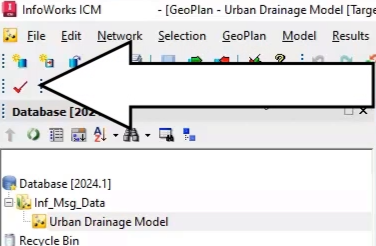
In the Output window, three red error messages appear to indicate missing values. In the GeoPlan, node TF92291602 and conduit TF92293601.1 are selected, as they have missing data.
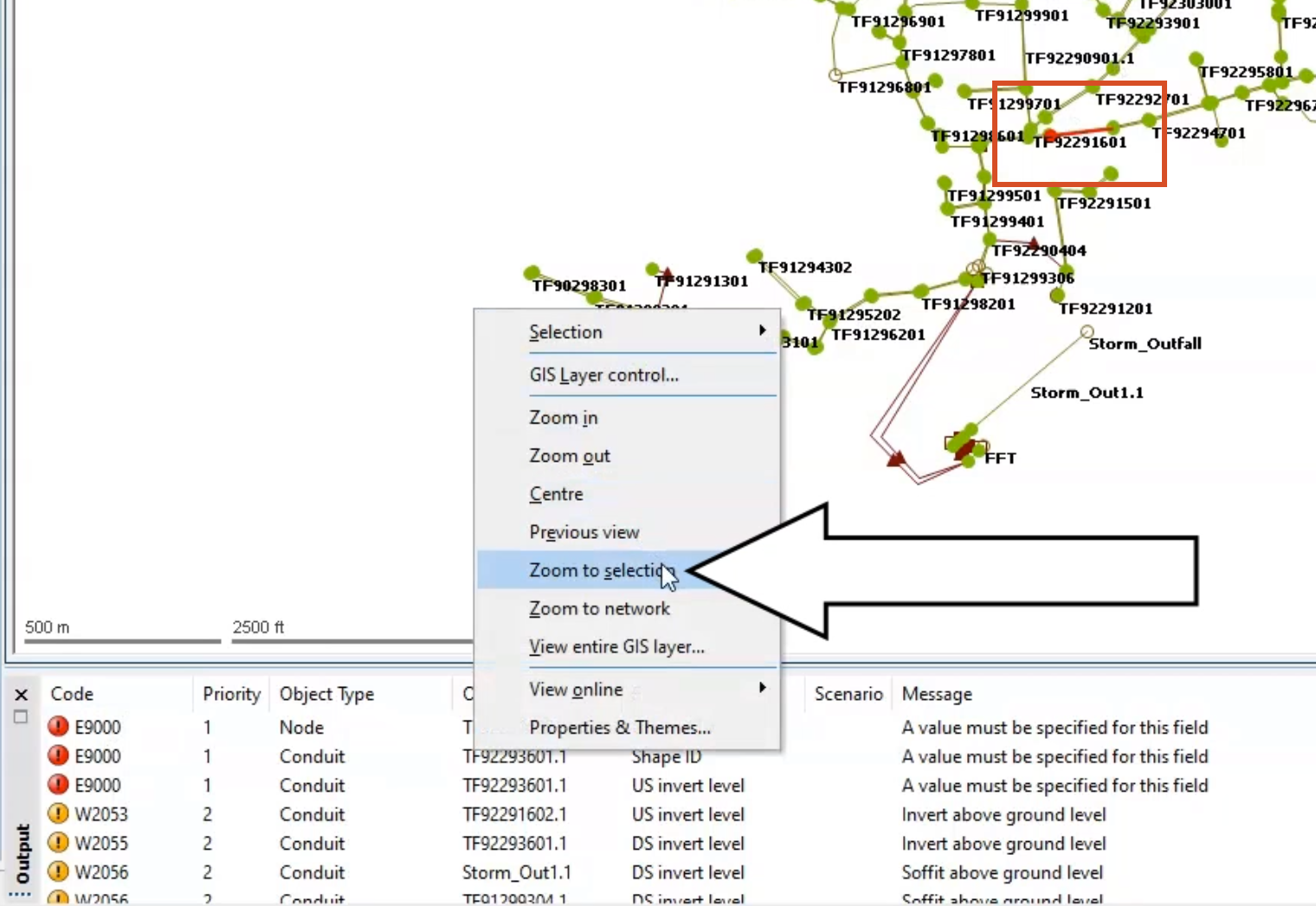
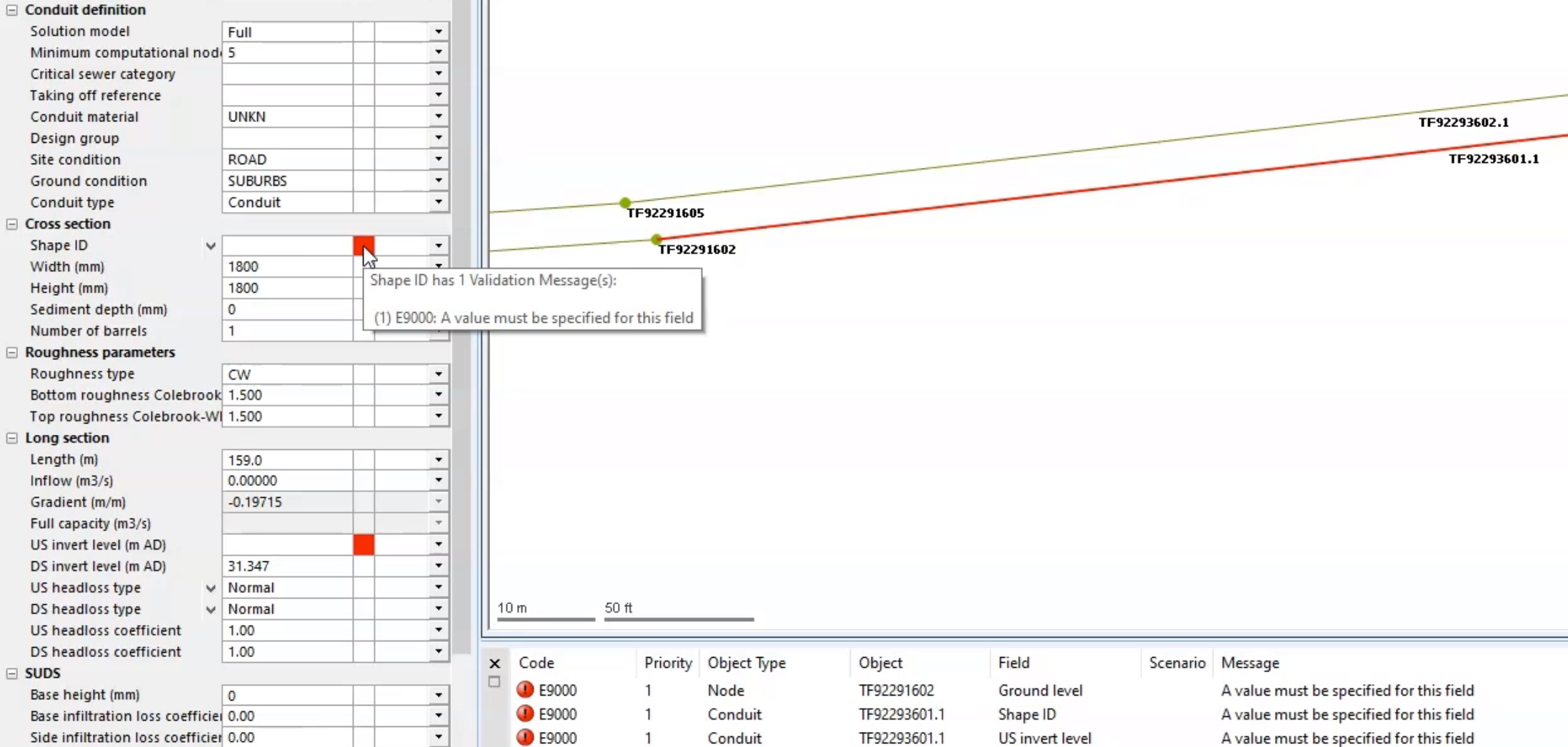

Now, use the Inference tool to populate the missing values:
From the Database, right-click the new Inference entry and select Open.
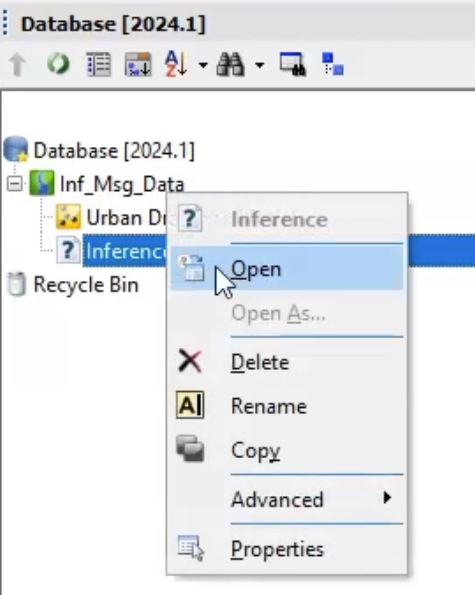
The Inference Data Editor opens with all rules selected by default.
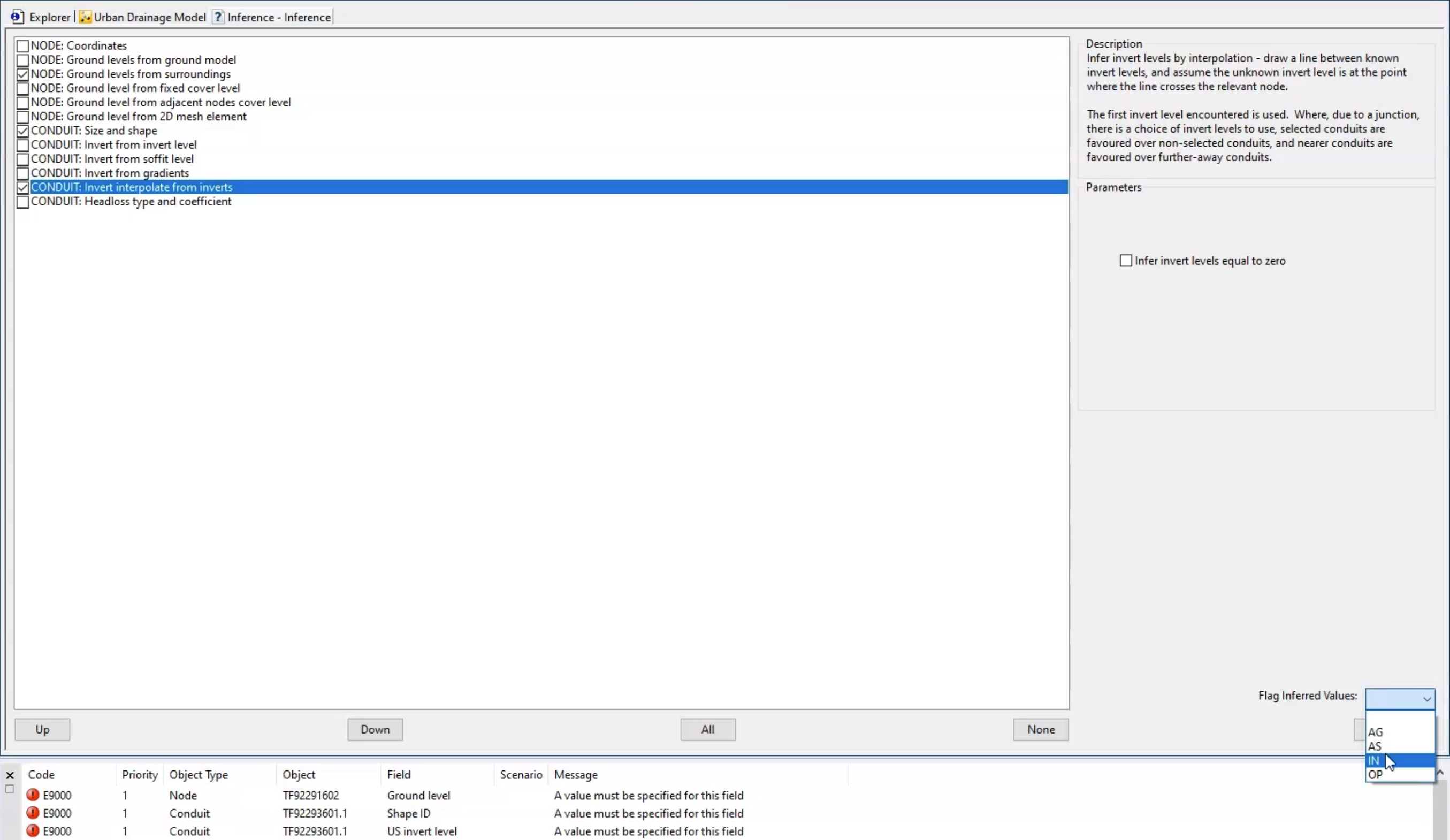
In the Output window, the previous error messages are removed.

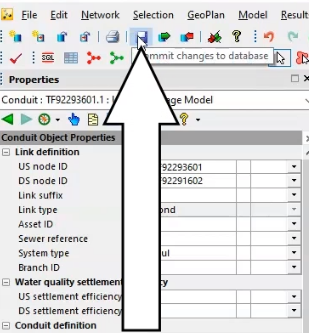
Be aware that the inference calculations can take some time on a much larger model, or a model that has more data to calculate than in this example.